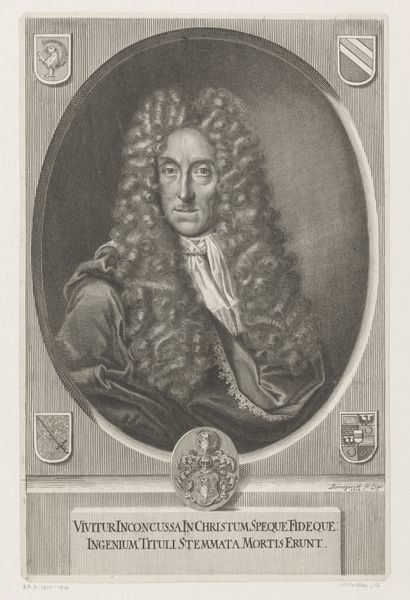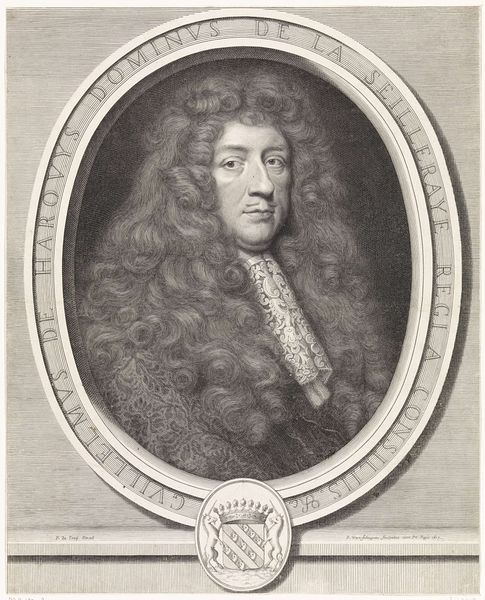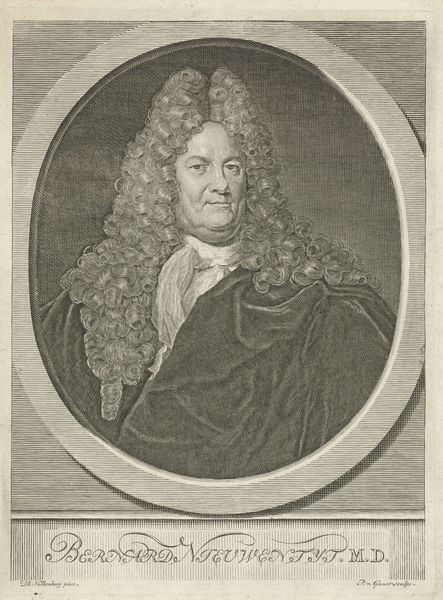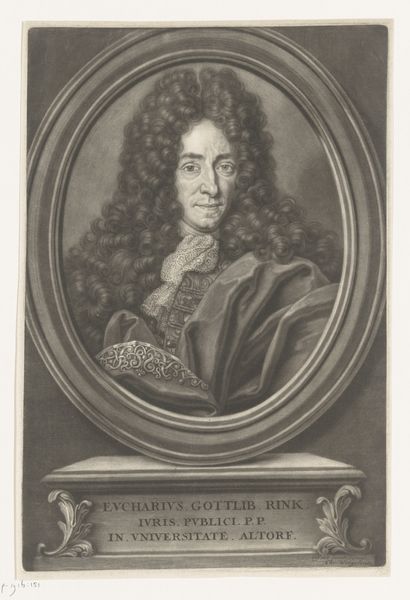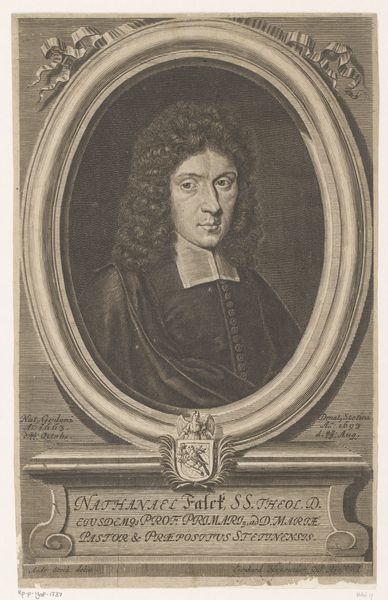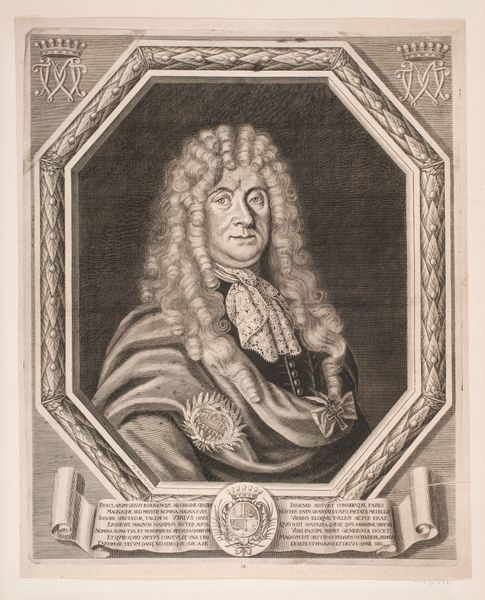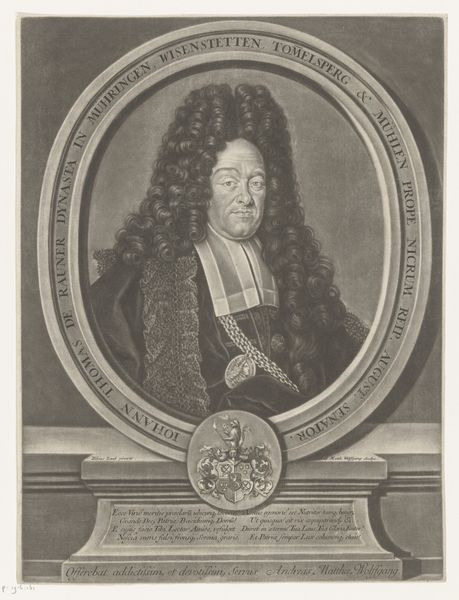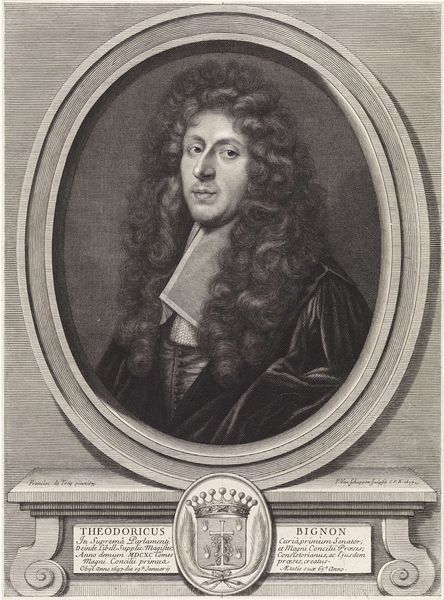
print, engraving
#
portrait
#
baroque
# print
#
line
#
portrait drawing
#
engraving
#
realism
Dimensions: height 271 mm, width 176 mm
Copyright: Rijks Museum: Open Domain
Editor: Here we have Pieter Schenk’s “Portrait of Gerhard Schott,” made sometime between 1670 and 1713. It’s an engraving, and something about the detail in his hair feels so striking, especially framed like that. What draws your eye in this piece? Curator: It’s the symbols, isn’t it? Look closely at the oval frame—it’s not merely decorative. Consider the shape: the egg. In many cultures, that symbolizes potential, rebirth. The curtain above hints at theatre, or revelation. He isn't just a man; he's a figure presented on a stage. What does the tasselled rope to the side signify to you? Editor: I hadn’t considered it as a stage… The rope maybe signals power, or status? Curator: Precisely! And below him, the plinth. It’s stone – signifying permanence, grounding. On it we see his coat-of-arms and inscription: Gerhardus Schott, senator of Hamburg. It all coalesces: ambition, civic responsibility, enduring legacy. But let's think about what isn't shown, too. Editor: That's true. It makes me think, what's concealed behind those symbols? Curator: What might his portrait reveal to those who saw it then, in terms of Hamburg's societal values or the sitter's place within it? Editor: I see it now—the image isn't just about Schott as a man, but about him as a representation of power within the city itself! The symbols build up layers of cultural meaning and tie him to Hamburg. I hadn't realized how much symbolism could be embedded in something that seems like a straightforward portrait. Curator: Exactly! Symbols always tell a more nuanced story if we take time to consider all meanings.
Comments
No comments
Be the first to comment and join the conversation on the ultimate creative platform.





